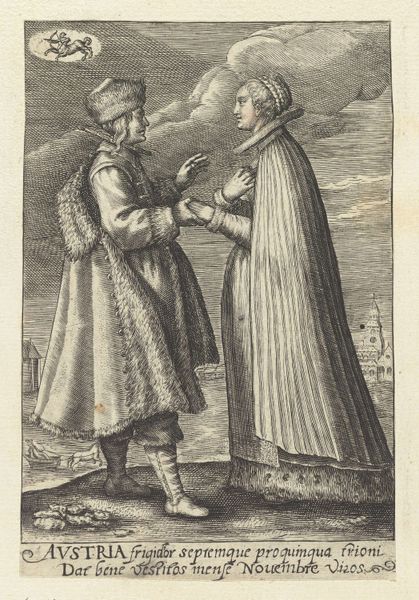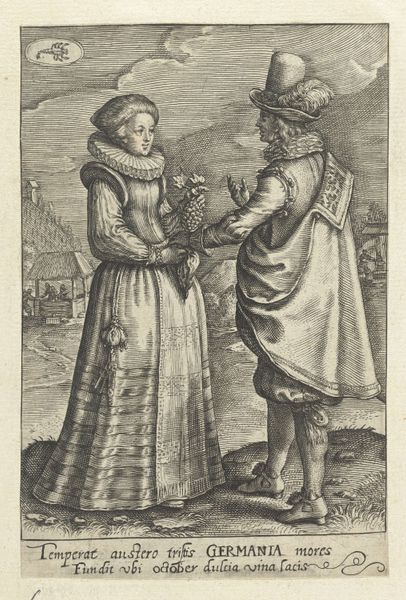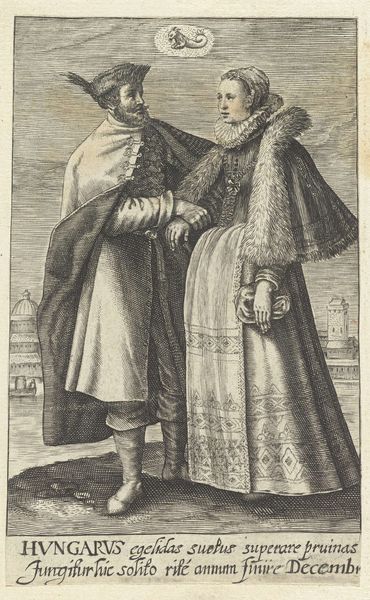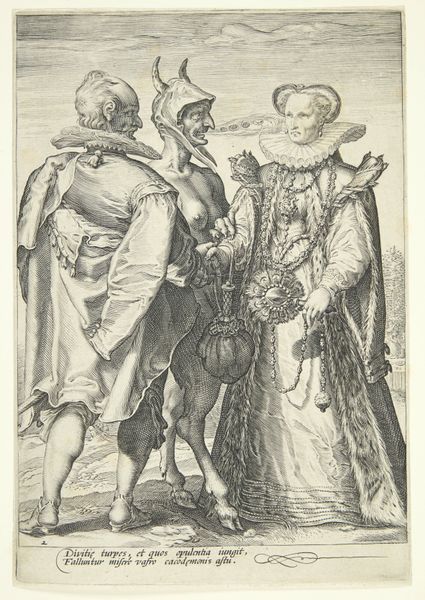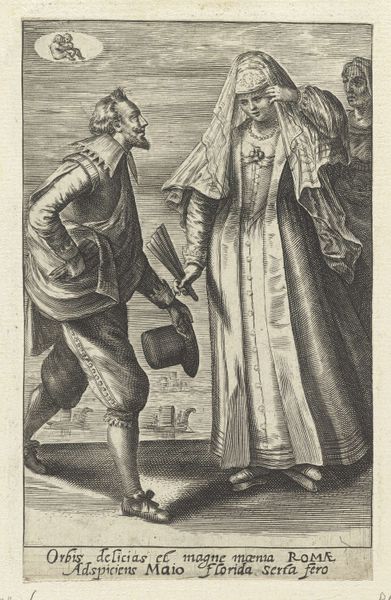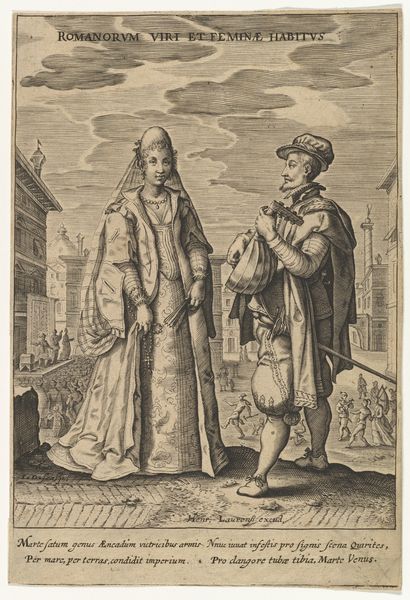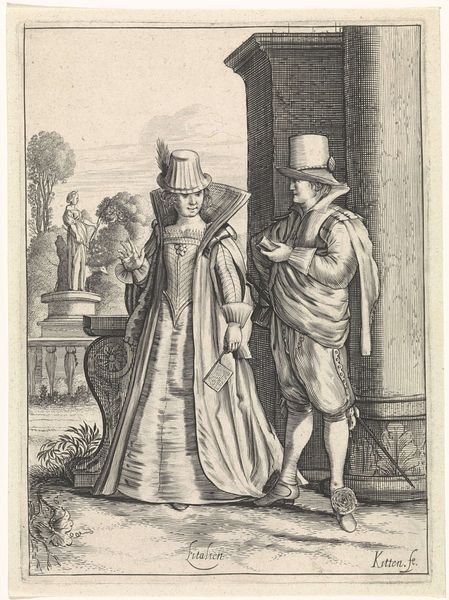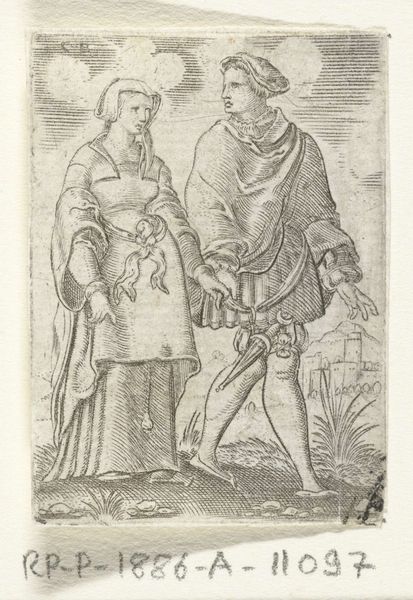
engraving
#
portrait
#
baroque
#
dog
#
old engraving style
#
personal sketchbook
#
genre-painting
#
dress
#
engraving
Dimensions: height 135 mm, width 89 mm, height 423 mm, width 271 mm
Copyright: Rijks Museum: Open Domain
Curator: Look at the density of line and the contrast in this engraving. Editor: Yes, “September: paar uit Engeland” by Crispijn van de Passe II, dating from 1604 to 1670. What strikes me first is the self-conscious theatricality. It is so posed! Curator: Absolutely, you see the detail invested in representing attire and its production of status. The ruffs, the cloaks, the buttons, and even that curious little dog; it is all clearly designed to communicate prosperity and, indeed, Englishness. Notice how their feet rest on different levels of the ground? Editor: That is a good catch. It makes one wonder about the intended audience, perhaps for distribution in England? The presence of the cityscape in the background surely emphasizes the wealth generated and concentrated in urban centers. Curator: I'd also point out the lines of labor made visible. These fabrics didn’t appear by magic. The processing of textiles, the stitching, the delicate lace—each of these details references entire production chains. Editor: True. We are also presented with an idealized image of gender roles of the era, one where domesticity and land management went hand in hand. Her flowers mirror the imagery of her ‘fruitful’ estate and service to her husband’s name. Curator: I agree with your comment on idealized images; let's not forget that it’s a visual product, designed to be consumed. Perhaps a memento of their travels abroad for the couple? Editor: Yes, or to emphasize English stability amidst tumultuous times? It is striking to consider how such seemingly straightforward images operate as a type of social and political messaging. Curator: Examining the materiality alongside its production offers invaluable insight into its historical and social impact. Editor: Ultimately, the layering of meaning reveals so much about the interplay between art, identity, and the public sphere in the early modern period.
Comments
No comments
Be the first to comment and join the conversation on the ultimate creative platform.
